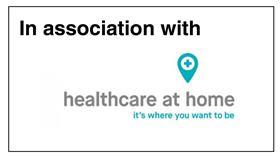The answers to easing the extreme pressures on the NHS already exist – now we need to use them, says Natalie Douglas
Over the past few weeks and months, the public have witnessed what happens when a system weakened by years of stress and underfunded primary care and out-of-hospital services is asked to manage a surge in demand exacerbated by seasonal pressures.

The media has busied itself recently with stories of crisis, but something interesting and hopefully more productive than in previous years is going on. Look a bit further than the latest winter crisis, and you can see progress and change happening.
Throughout the health and care system we are seeing new partnerships emerge that offer new terms for idea generation, funding and delivery, and here lies reason for hope.
Change is never comfortable and some are better at adapting than others. Unfortunately, we often have to face a nostalgic public and political class fearful of change. Cue a media storm. But nothing screams “we must change to survive!” louder than a media storm, and thus the stage is set for change and a new way of doing things.
Tangible benefits
The question we should be asking ourselves is not what, or how, but why is the adoption of new models and systems of care so slow and sporadic? And how can we standardise these to benefit larger patient populations more quickly?
The NHS does not have to go it alone. There are countless examples of where public, private and third sector organisations have formed alliances and partnerships to put in place short and long term solutions. And they have very real, tangible benefits:
- The Healthcare at Home ambulatory paediatric service at King’s saw a 97 per cent reduction in children being “treated and transferred” to another hospital due to lack of capacity, and a 33 per cent reduction in paediatric emergency department four-hour target breaches.
- Our discharge to assess pilot at University Hospital Southampton showed that approximately two-thirds of patients required a smaller package of care, and reduced AVLOS by 8.5 days.
- Good Hope have reduced their length of stay by 6.1 days consistently for the last three years by working with a number of providers to deliver clinical care in the home.
Healthcare at Home started as a medicines management and delivery company, but by pioneering new models it has evolved into a company that works hand-in-hand with every hospital trust in the country to give patients specialist acute care in the home, offering choice, improved access and improved outcomes. Today, we see 1 in 500 patients in the UK and have cared for more than four million patients.
The NHS must be allowed to evolve too. Already there are solutions out there that can be adopted more widely; and there are partners willing and able to support.
We have the greatest opportunity for reform in a generation. Let’s stop talking about what the problems are and start talking about the solutions that are out there and how they can be applied more widely.
Natalie Douglas is chief executive of Healthcare at Home


























1 Readers' comment